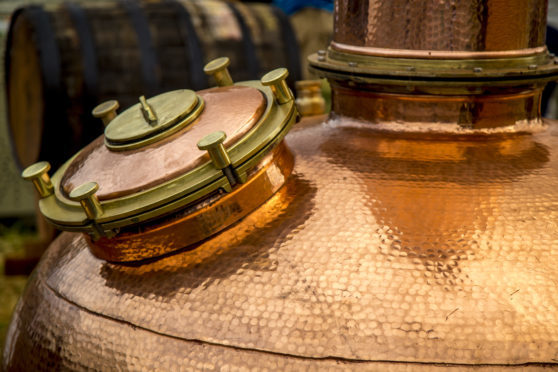It is interesting how whisky distilling has changed, from the days of illicit stills in remote caves to the big pot and column stills of today. Yet the central process, separating alcohol from water, remains the same.
Ethyl alcohol boils at roughly 80C, while water boils at 100C. So heating a mix of the two to 85-90C should mean the alcohol evaporates and the water remains. Just condense the alcohol vapour in coolers or condensers and voila!
However, it isn’t that simple. Alcohol has an affinity to water and pulls water vapour with it as it boils. Hence malt distilleries have wash and spirit stills. Wash (the crude beer from the washbacks) has about 8% alcohol, and the wash-still distillation ups this to 20-28%, the low wines. These are redistilled in the spirit still, upping the alcohol to 70%-plus. This is reduced to 63.5% for casking — the best compromise between good spirit strength and not handing too much to the angels.
Back in the “old days”, pot stills were directly heated, originally by coal fires, later by gas or oil. But that could lead to yeast and starch residues in the wash stills scorching and spoiling the distillate. To prevent this, rotating “rummagers” were installed, like huge chain pot-scrubbers. These have largely vanished, although Glenfarclas distillery still use them, with gas direct-heating.
Most distilleries today heat their stills by steam coils or “pans”, which heat the wash or low wines the way electric coils heated older electric kettles. Indeed the latest systems involve heat-exchangers beside the stills, with the wash or low wines constantly pumped through them.
The column, or Coffey, stills used in vast grain distilleries are more complex and can operate “around the clock”. Scalding steam strips alcohol from the incoming wash leaving a gooey yeast residue. This used to be dried and sold but is now often converted to methane to burn in the boilers.
Column stills produce very strong (up to 90%) spirit, but it’s relatively flavourless. This is casked to make grain whisky, which is later bulk-mixed with many different malt whiskies to make the volume-selling blended whiskies. Alternatively, the spirit can be further distilled and refined to make vodka or gin. Or, if it’s sub-standard, industrial alcohol.










